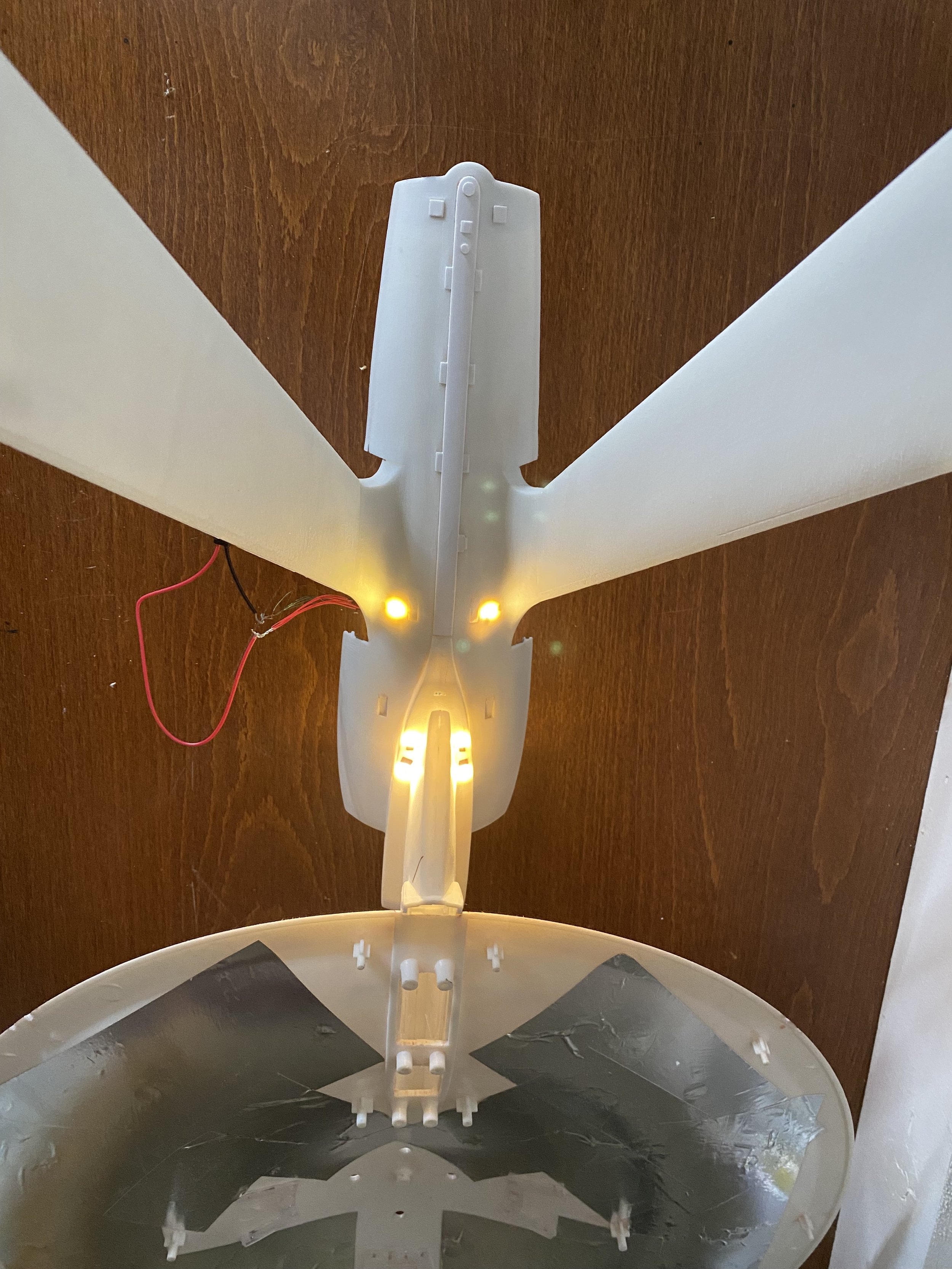More electrical work…
I’ve been moving right along in terms of wiring, adding LEDs, and, of course, doing connection tests. For a 9-volt battery, I have a maximum limit of 50 pico-scale LEDs I can use. I will ultimately hit that limit at this rate.
However, I am pleased with the results. For instance, I want the windows to be relatively subdued and varied to give the impression there are rooms behind the ports. I also want them to have a bluish cast, I suppose to give the impression of thick glass. The flood lights will be super bright pinpoints (achieved more clearly when the entire model is painted and the light ports are masked off) using a warmer tone. This adds some interesting variety. The navigation lights will be steady, not blinking, to mimic the way these lights exist on ships and airplanes. Anti-collision strobes will be slow flash, as for some reason this gives me a better impression of a large vehicle.
The impulse engines are orange (what you see here is a bit messy due to masking tap covering the exhaust ports themselves) and the brightness appears exactly right. Grills will be added back there later, which should add even more interest. The blue crystal in front of the engines is super bright and a bit multi-faceted, with light coming through a small glass marble to give the impression of a mixing of antimatter (or some damn thing). I added some structure under the glass dome to give dimension and this will be lit up further when the primary hull halves are glued together.
Some who know every square inch of this fictional vehicle will note the artistic liberties taken. For example, I want the engine area to be busy, since engines need maintenance and so forth, and even a little messy (I want to use various shades of burnt metal around here as well). Spot beams are placed where they make sense, since how they are placed in the film miniature doesn’t always work due to clearances. The filming miniature, for instance, features spot beams provided by off-camera light sources directed by small mirrors.


















